|
|
|||
| forums: groups: | |||
|
"Drain-safe gunge?"
I play by myself mostly in my shower because I live in a small apartment and don't really have space elsewhere, and I also have no practical way to clean off other than the regular shower. So I've pretty much limited myself to just shaving foam, canned whipped cream, and Cool Whip, stuff that rinses down the drain easily. Tonight I experimented with pouring a 48-ounce bottle of chocolate syrup over my head and face, and it was fun.
I'm interested in exploring green slime (or other colors), but how do I make a slime that is 1) safe to swallow (as I might do a bit of pouring into my mouth) and 2) safe to rinse down the drain?
Also, what other food substances might I find at a US grocery store that can be used as gunge and are drain-safe? (I'm not necessarily limiting myself to sweets.)
I'm interested in exploring green slime (or other colors), but how do I make a slime that is 1) safe to swallow (as I might do a bit of pouring into my mouth) and 2) safe to rinse down the drain?
Also, what other food substances might I find at a US grocery store that can be used as gunge and are drain-safe? (I'm not necessarily limiting myself to sweets.)
No pics of myself for professional reasons.
Hi there!
If you're looking for a gunge that is safe to pour down the drain all of our products are 100% biodegradable and fully dilute after your sessions with water! As for the safe to swallow our products should not be ingested but if you're looking for a quick easy gunge that can be mixed in minutes and cleaned up quickly definitely give our stuff a try!
If you're US based and place an order over $50 you'll get free shipping as well! Let me know if you have any questions and I'll be happy to answer them!
-Scott
Splatter Emporium
If you're looking for a gunge that is safe to pour down the drain all of our products are 100% biodegradable and fully dilute after your sessions with water! As for the safe to swallow our products should not be ingested but if you're looking for a quick easy gunge that can be mixed in minutes and cleaned up quickly definitely give our stuff a try!
If you're US based and place an order over $50 you'll get free shipping as well! Let me know if you have any questions and I'll be happy to answer them!
-Scott
Splatter Emporium
Wet room drains are even more of a pain!
Arrowroot powder and food coloring. You can eat it, play in it, it's sticky and stringy and slimy, and it rinses right off easily.
Here's the recipe, just change the tempura paint to food coloring.
https://umd.net/profile/i/bobographer/section/videos/video/a-low-cost-excellent-slime-recipe
Here's the recipe, just change the tempura paint to food coloring.
https://umd.net/profile/i/bobographer/section/videos/video/a-low-cost-excellent-slime-recipe
This topic comes up a lot. I was thinking about writing a book/manual on indoor plumbing and drainage for Wammers  . I think someone actually did once advertise as a 'WAM and kink friendly' plumber. I'm certain that wasn't as glamourous as it sounds
. I think someone actually did once advertise as a 'WAM and kink friendly' plumber. I'm certain that wasn't as glamourous as it sounds  . It might be an idea to start a wiki on the topic, anyway.
. It might be an idea to start a wiki on the topic, anyway.
Most commercially available gunge powders are 100 percent soluble in water and bio degradable (and are sold with data safety sheets), so, apart from slowing down the flow and 'backing up' temporarily there should never be a problem flushing them through (unless there was already a problem!). The waste pipes for sinks, basins and showers are quite narrow, so expect it to be slower than usual and to require a reasonable amount of flushing water. Cake batter, oils and sugars might cause some problems if they build up, but again, these will eventally break down and flush away.
Scoop thicker food substances up and flush them down the toilet if you are on a mains sewer (observe special percuations if you are on a septic tank). Or put it in the trash, your food waste recycling, or a compost heap.
Blockages occur though 'normal' shower use and by far the biggest culprit is a build up of hair collecting in the traps and beyond, other substances eventually become enmeshed in it, fungal cultures grow and cause blockages. If someone in the house has very long hair, this will happen very quickly and often. If your water is 'hard' long term calcification can also lead to serious problems.
and by far the biggest culprit is a build up of hair collecting in the traps and beyond, other substances eventually become enmeshed in it, fungal cultures grow and cause blockages. If someone in the house has very long hair, this will happen very quickly and often. If your water is 'hard' long term calcification can also lead to serious problems.
If you are a WAMmer you really need to get to know your domestic wastepipe-work and keep on top of its maintenance, clear your traps (if they are accesible) and give your pipes a regular dose of a proprietary drain un-blocker if you are on mains drainage (again, special precautions and exclusions for septic tanks depending a a wide variety of circumances and set-ups - but it's in your interests to get to know and understand these.)
Richard
 . I think someone actually did once advertise as a 'WAM and kink friendly' plumber. I'm certain that wasn't as glamourous as it sounds
. I think someone actually did once advertise as a 'WAM and kink friendly' plumber. I'm certain that wasn't as glamourous as it sounds  . It might be an idea to start a wiki on the topic, anyway.
. It might be an idea to start a wiki on the topic, anyway. Most commercially available gunge powders are 100 percent soluble in water and bio degradable (and are sold with data safety sheets), so, apart from slowing down the flow and 'backing up' temporarily there should never be a problem flushing them through (unless there was already a problem!). The waste pipes for sinks, basins and showers are quite narrow, so expect it to be slower than usual and to require a reasonable amount of flushing water. Cake batter, oils and sugars might cause some problems if they build up, but again, these will eventally break down and flush away.
Scoop thicker food substances up and flush them down the toilet if you are on a mains sewer (observe special percuations if you are on a septic tank). Or put it in the trash, your food waste recycling, or a compost heap.
Blockages occur though 'normal' shower use
 and by far the biggest culprit is a build up of hair collecting in the traps and beyond, other substances eventually become enmeshed in it, fungal cultures grow and cause blockages. If someone in the house has very long hair, this will happen very quickly and often. If your water is 'hard' long term calcification can also lead to serious problems.
and by far the biggest culprit is a build up of hair collecting in the traps and beyond, other substances eventually become enmeshed in it, fungal cultures grow and cause blockages. If someone in the house has very long hair, this will happen very quickly and often. If your water is 'hard' long term calcification can also lead to serious problems. If you are a WAMmer you really need to get to know your domestic wastepipe-work and keep on top of its maintenance, clear your traps (if they are accesible) and give your pipes a regular dose of a proprietary drain un-blocker if you are on mains drainage (again, special precautions and exclusions for septic tanks depending a a wide variety of circumances and set-ups - but it's in your interests to get to know and understand these.)
Richard
Bringing pleasure to literally tens of people!
A general rule of thumb . . . if it dissolves in water you are safe. If it doesn't, you are not.
Example, baked beans, rice pudding, oatmeal contain a lot of solid matter which won't normally or easily dissolve in water. Do NOT put them down the drain. Another one to avoid is bread dough, as it can harden before it has a chance to dissolve.
Some materials will swell up with water after they sit for awhile, and if they are in your plumbing before they swell up, they can do so afterwards causing a blockage. One such substance is sodium polyacrylate which are the micro beads that absorb water. Larger balls of it are known as orbees. I've used the fine sodium polyacrylate with water and have had no issues with it going down the drain because I make sure it has absorbed all the water it can. The product 'Jelli Baff' is basically sodium polyacrylate, and salt will break it down into a liquid again when ready to drain.
When you run anything down the drain, always run water with it, just to make it even thinner and able to flow through the pipes easier. If you have anything with lumps or chunks in it, do NOT attempt to drain it away, as it will almost certainly form blockages. A blockage of bread dough in a pipe will only become more cement-like as it continues to dry out, so avoiding it is the best thing to do. Having said that, well-diluted bread dough will turn into whitish-water and will be safe to drain.
Anatomy of a 'lump'. A lump in any thick liquid is basically a small bit of undissolved material surrounded by a thick, wet coating. For example, Xanthan Gum is hard to mix and if you just stir some in a bowl of water, it will result in horrible lumps. Each lump is like a tiny time-bomb, as it is a sealed packet of dry xanthan gum, and will eventually become a thick, gelatinous lump that could easily block pipes. So I use a large food processor with a sharp blade at the bottom, and it slices the lumps so that they all dissolve into the mixture, resulting in a smooth slime that can be further dissolved away when it's time to let it down the drain. If all else fails, and you wind up with a bathtub full of anything lumpy that won't dissolve, have a pool strainer or colander handy and fish them out and into a bucket to be gradually flushed. A lot of other good advice was provided here, such as septic tank concerns.
Example, baked beans, rice pudding, oatmeal contain a lot of solid matter which won't normally or easily dissolve in water. Do NOT put them down the drain. Another one to avoid is bread dough, as it can harden before it has a chance to dissolve.
Some materials will swell up with water after they sit for awhile, and if they are in your plumbing before they swell up, they can do so afterwards causing a blockage. One such substance is sodium polyacrylate which are the micro beads that absorb water. Larger balls of it are known as orbees. I've used the fine sodium polyacrylate with water and have had no issues with it going down the drain because I make sure it has absorbed all the water it can. The product 'Jelli Baff' is basically sodium polyacrylate, and salt will break it down into a liquid again when ready to drain.
When you run anything down the drain, always run water with it, just to make it even thinner and able to flow through the pipes easier. If you have anything with lumps or chunks in it, do NOT attempt to drain it away, as it will almost certainly form blockages. A blockage of bread dough in a pipe will only become more cement-like as it continues to dry out, so avoiding it is the best thing to do. Having said that, well-diluted bread dough will turn into whitish-water and will be safe to drain.
Anatomy of a 'lump'. A lump in any thick liquid is basically a small bit of undissolved material surrounded by a thick, wet coating. For example, Xanthan Gum is hard to mix and if you just stir some in a bowl of water, it will result in horrible lumps. Each lump is like a tiny time-bomb, as it is a sealed packet of dry xanthan gum, and will eventually become a thick, gelatinous lump that could easily block pipes. So I use a large food processor with a sharp blade at the bottom, and it slices the lumps so that they all dissolve into the mixture, resulting in a smooth slime that can be further dissolved away when it's time to let it down the drain. If all else fails, and you wind up with a bathtub full of anything lumpy that won't dissolve, have a pool strainer or colander handy and fish them out and into a bucket to be gradually flushed. A lot of other good advice was provided here, such as septic tank concerns.
Appreciate the thoughts everyone. From the suggestions here, I'll look into experimenting with the arrowroot powder formula, and maybe the cake mix + water only idea.
I wish I could set up a place to make a big scene and then just wrap it all up in drop cloths, but the largest space I can make in this small apartment, no matter how creative I get, is an area about 3 feet by 4 feet against a wall in the bedroom. I can and have used that spot for pie sessions (making sure splatter goes toward the wall; fortunately it's only about five steps away from the shower), but with the potential 360 splatter that gunge can produce, I can't safely contain it to that small area. There's no practical way to rig up a "curtain" of drop cloths in the middle of the room to create a smaller "room", and I can't build any type of structure because there would be no way to hide it in a small apartment from nosy parents who visit. So the shower it is, until I can figure out a way in this horrible market to buy a house, and more than likely move far away from my parents.
I wish I could set up a place to make a big scene and then just wrap it all up in drop cloths, but the largest space I can make in this small apartment, no matter how creative I get, is an area about 3 feet by 4 feet against a wall in the bedroom. I can and have used that spot for pie sessions (making sure splatter goes toward the wall; fortunately it's only about five steps away from the shower), but with the potential 360 splatter that gunge can produce, I can't safely contain it to that small area. There's no practical way to rig up a "curtain" of drop cloths in the middle of the room to create a smaller "room", and I can't build any type of structure because there would be no way to hide it in a small apartment from nosy parents who visit. So the shower it is, until I can figure out a way in this horrible market to buy a house, and more than likely move far away from my parents.
No pics of myself for professional reasons.
11/16/24, 3:54pm: No-bump reply
The toilet is your best friend here, it deals with all your shit so a bit of gunge is no issue for it.
I always scoop out as much mess as possible before turning on the shower, the less to put down the plughole the less likely you are to have plumbing issues.
I always scoop out as much mess as possible before turning on the shower, the less to put down the plughole the less likely you are to have plumbing issues.
Saturation Hall, Langstonedale
Lord of the Pies
Something worth being aware of - more water to flus stuff out with - **MUCH** more water - is always a good thing. Once you have rinsed something down the drain, open the taps and let the water flow for 10, 15, 20 minutes solid. Yes, if you're on a water meter it'll cost a little, but still way cheaper than the cost and potential embarassment of having to call out a drain rodding firm.
I've noticed this in general, when you say "lots" to many people, they think in terms of a bucket's worth, not hundreds of gallons, but the key to avoiding blockages is a **lot** of flush-out water.
Basically you want to make sure that whatever you have rinsed down the drain or flushed down the toilet is followed by what amounts to a tidal wave of water to carry it well out into the main sewers, where it won't cause a blockage, rather than congealing in the pipes under your building and causing everyone's toilets to block up three days later. If you do put stuff down the toilet, you want to follow the last of it with five or so full flushes (and long ones, not the little short ones some modern loos do), again to make sure everything is well flushed away.
Also worth being aware what kind of sewer system your building has. Here at the Hall the system is Victorian and "common pipe", all the drainage, the toilets, the baths and sinks, the water off the roofs, it all flows into one common pipe to the main sewers. This is actually the best system from a sploshing POV as it means if we're shooting on a rainly day, then the water off the roof is helping to flush out the same pipes all the waste mess from the dungeon is flowing into. Most older houses in the UK have common pipe sewers.
More modern buildings will sometimes have a split system where the toilet waste (foul water) flows through separate pipes to those from bath, sink, and rainwater drainage (grey water). In those cases, it's even more important to do multiple flushes if disposing of stuff down the toilet.
(note all of this assumes connections to main sewers, things are very different if using septic tank systems, you definitely don't want to flood out a septic tank)
I've noticed this in general, when you say "lots" to many people, they think in terms of a bucket's worth, not hundreds of gallons, but the key to avoiding blockages is a **lot** of flush-out water.
Basically you want to make sure that whatever you have rinsed down the drain or flushed down the toilet is followed by what amounts to a tidal wave of water to carry it well out into the main sewers, where it won't cause a blockage, rather than congealing in the pipes under your building and causing everyone's toilets to block up three days later. If you do put stuff down the toilet, you want to follow the last of it with five or so full flushes (and long ones, not the little short ones some modern loos do), again to make sure everything is well flushed away.
Also worth being aware what kind of sewer system your building has. Here at the Hall the system is Victorian and "common pipe", all the drainage, the toilets, the baths and sinks, the water off the roofs, it all flows into one common pipe to the main sewers. This is actually the best system from a sploshing POV as it means if we're shooting on a rainly day, then the water off the roof is helping to flush out the same pipes all the waste mess from the dungeon is flowing into. Most older houses in the UK have common pipe sewers.
More modern buildings will sometimes have a split system where the toilet waste (foul water) flows through separate pipes to those from bath, sink, and rainwater drainage (grey water). In those cases, it's even more important to do multiple flushes if disposing of stuff down the toilet.
(note all of this assumes connections to main sewers, things are very different if using septic tank systems, you definitely don't want to flood out a septic tank)
Saturation Hall - Forth! The Gungemaidens!
screen_name said: The toilet is your best friend here, it deals with all your shit so a bit of gunge is no issue for it.
I always scoop out as much mess as possible before turning on the shower, the less to put down the plughole the less likely you are to have plumbing issues.
I always scoop out as much mess as possible before turning on the shower, the less to put down the plughole the less likely you are to have plumbing issues.
That would be nice, but it's difficult to move mess from the shower/tub to the toilet when I'm covered in mess. My bathroom has a weird layout, where the toilet is in its own cranny on the opposite side of a wall that has the shower head and tub tap on the other side (picture attached, may be delayed for admin review), so I cannot reach the toilet from inside the tub. I would have to step out covered in mess, dropping mess everywhere, and move several steps back and forth in each direction to transport mess from the tub to the toilet.
What would your thought be on lining the tub with a large drop cloth, having my session, then kind of hand-squeegeeing the worst of the mess off my body and then folding over the drop cloth on the far end of the tub while I shower, then once clean disposing of the mess contained in the drop cloth via either toilet or trash? I just thought of this idea now and am not sure how well it will work.
DungeonMasterOne said: (note all of this assumes connections to main sewers, things are very different if using septic tank systems, you definitely don't want to flood out a septic tank)
I am definitely on a mains sewer, I know that much.
DungeonMasterOne said: Also worth being aware what kind of sewer system your building has. Here at the Hall the system is Victorian and "common pipe", all the drainage, the toilets, the baths and sinks, the water off the roofs, it all flows into one common pipe to the main sewers. This is actually the best system from a sploshing POV as it means if we're shooting on a rainly day, then the water off the roof is helping to flush out the same pipes all the waste mess from the dungeon is flowing into. Most older houses in the UK have common pipe sewers.
More modern buildings will sometimes have a split system where the toilet waste (foul water) flows through separate pipes to those from bath, sink, and rainwater drainage (grey water). In those cases, it's even more important to do multiple flushes if disposing of stuff down the toilet.
More modern buildings will sometimes have a split system where the toilet waste (foul water) flows through separate pipes to those from bath, sink, and rainwater drainage (grey water). In those cases, it's even more important to do multiple flushes if disposing of stuff down the toilet.
I don't know this, and don't know how to find out. Any suggestion on how to find out without having to ask the landlord? I know I'm in the US, in a suburban but highly populated area, and according to county records my building was constructed in 2007.
No pics of myself for professional reasons.
Try a bucket outside the bath and scoop the remains from the bath to the bucket. I find a sweeping pan like in the picture and a window cleaning blade instead of the brush are very effective
Remember if you get tempted to use the bucket of slops you will need to start the clean up again
Remember if you get tempted to use the bucket of slops you will need to start the clean up again

Sponsors
To avoid content being blocked due to your local laws, please verify your age ?
Sponsors

Design & Code ©1998-2026 Loverbuns, LLC 18 U.S.C. 2257 Record-Keeping Requirements Compliance Statement
Epoch Billing Support Log In





 Love you, too
Love you, too



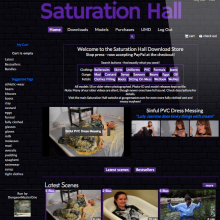
















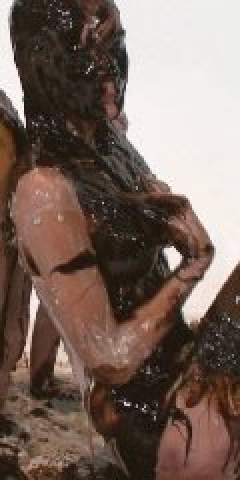



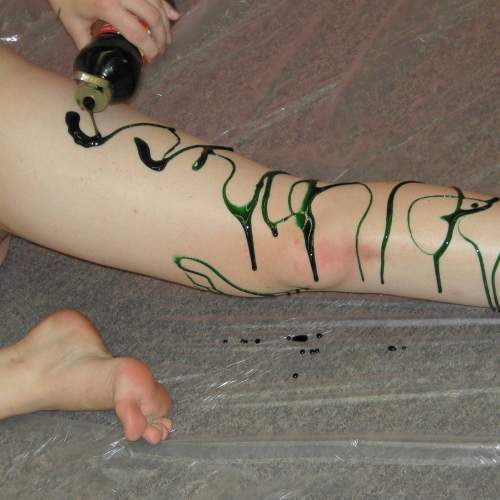
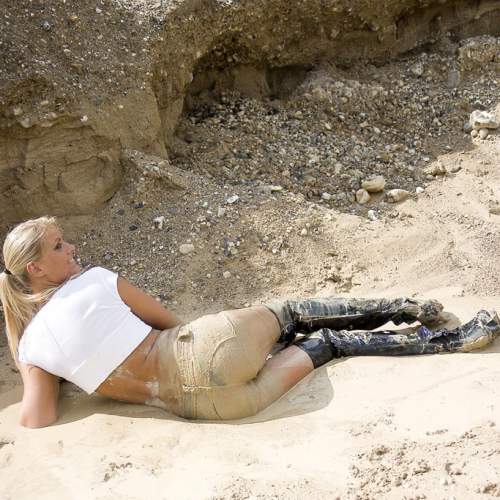




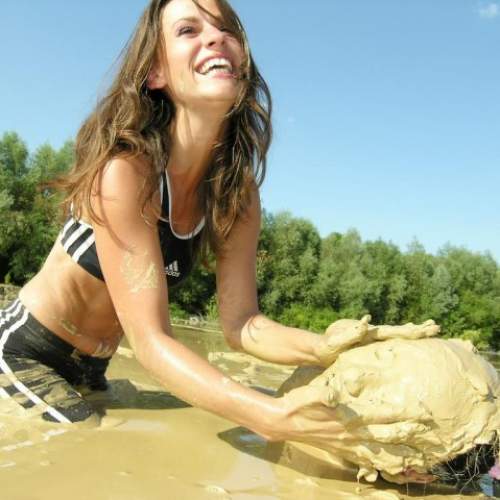


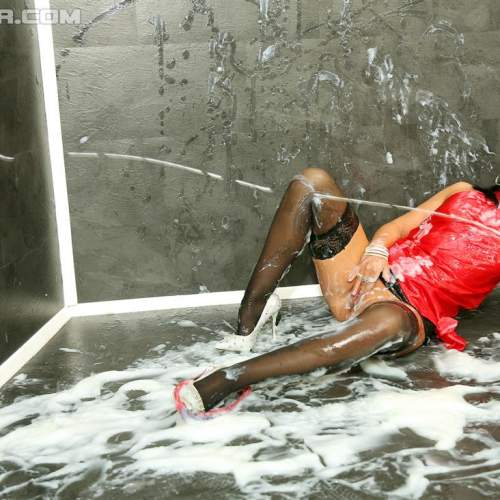
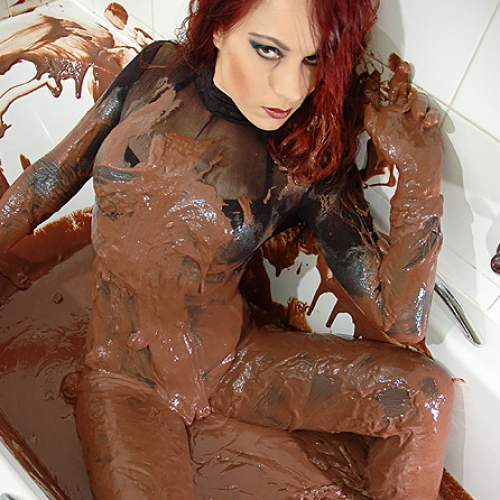





 VIP Coupons
VIP Coupons